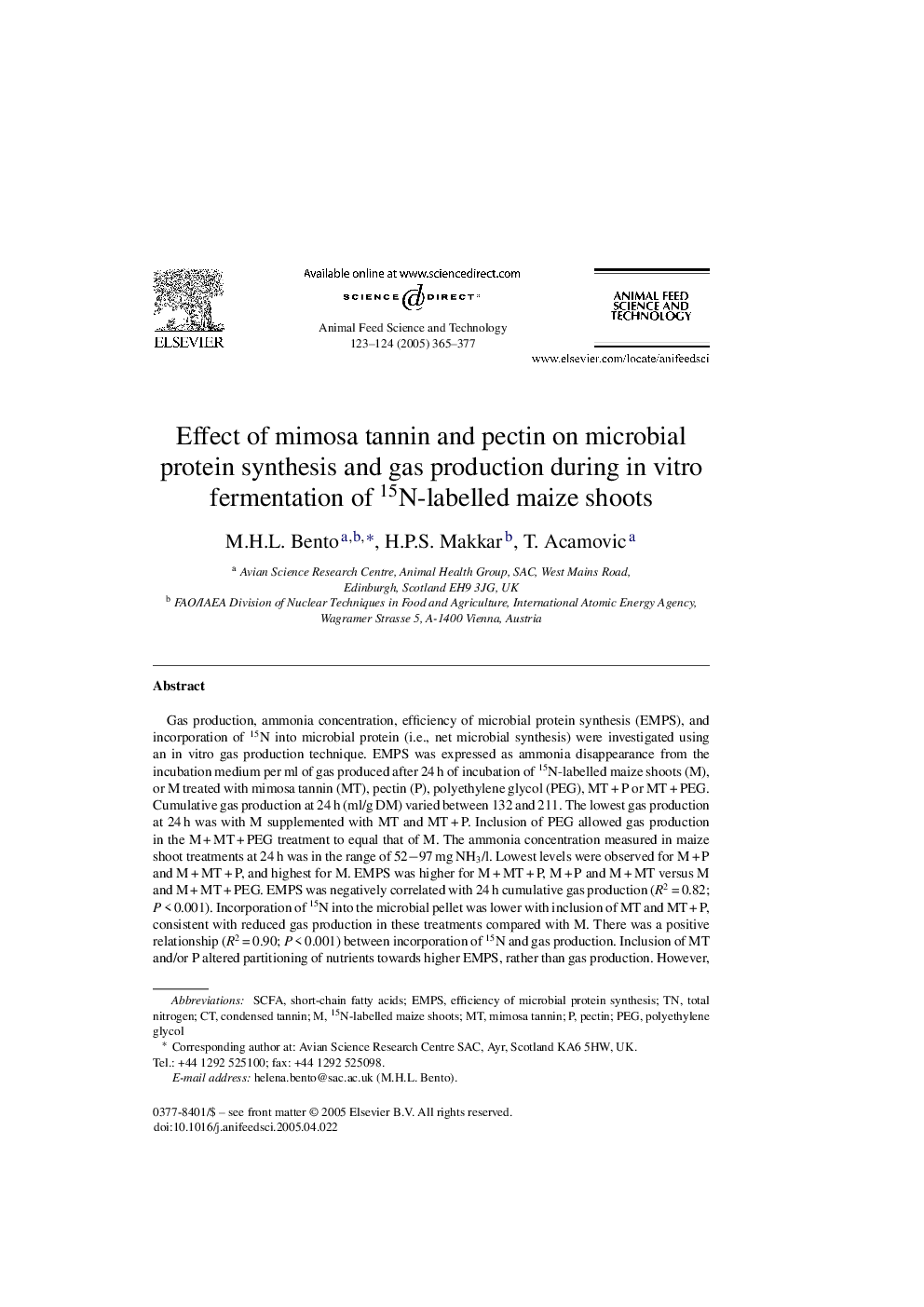| Article ID | Journal | Published Year | Pages | File Type |
|---|---|---|---|---|
| 9916624 | Animal Feed Science and Technology | 2005 | 13 Pages |
Abstract
Gas production, ammonia concentration, efficiency of microbial protein synthesis (EMPS), and incorporation of 15N into microbial protein (i.e., net microbial synthesis) were investigated using an in vitro gas production technique. EMPS was expressed as ammonia disappearance from the incubation medium per ml of gas produced after 24 h of incubation of 15N-labelled maize shoots (M), or M treated with mimosa tannin (MT), pectin (P), polyethylene glycol (PEG), MT + P or MT + PEG. Cumulative gas production at 24 h (ml/g DM) varied between 132 and 211. The lowest gas production at 24 h was with M supplemented with MT and MT + P. Inclusion of PEG allowed gas production in the M + MT + PEG treatment to equal that of M. The ammonia concentration measured in maize shoot treatments at 24 h was in the range of 52â97 mg NH3/l. Lowest levels were observed for M + P and M + MT + P, and highest for M. EMPS was higher for M + MT + P, M + P and M + MT versus M and M + MT + PEG. EMPS was negatively correlated with 24 h cumulative gas production (R2 = 0.82; P < 0.001). Incorporation of 15N into the microbial pellet was lower with inclusion of MT and MT + P, consistent with reduced gas production in these treatments compared with M. There was a positive relationship (R2 = 0.90; P < 0.001) between incorporation of 15N and gas production. Inclusion of MT and/or P altered partitioning of nutrients towards higher EMPS, rather than gas production. However, net microbial protein synthesis was reduced in M + MT and M + MT + P, possibly due to restriction of microbial growth by MT.
Keywords
Related Topics
Life Sciences
Agricultural and Biological Sciences
Animal Science and Zoology
Authors
M.H.L. Bento, H.P.S. Makkar, T. Acamovic,
